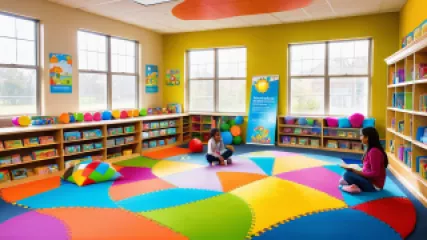The Definitive Guide to Effective Cognitive Development Strategies
Cognitive development is a fundamental aspect of human growth that encompasses the transformation of thought processes, including remembering, problem-solving, and decision-making from childhood through adulthood. It is an area of great interest not only to psychologists but also to educators and parents who seek to foster an environment conducive to intellectual growth. In this ultimate guide, we will delve deep into the most effective cognitive development strategies, examine various approaches, and provide insights into how one can implement these strategies both in personal and professional settings.
Understanding Cognitive Development
Before diving into specific strategies, it’s crucial to understand what cognitive development entails. Cognitive development refers to the progression of mental processes such as thinking, learning, and memory. Jean Piaget, a renowned psychologist, posited that children go through four stages of cognitive development:
- Sensorimotor Stage (Birth to 2 years): During this stage, infants learn about the world through their senses and actions.
- Preoperational Stage (2 to 7 years): Children begin to think symbolically and use words or pictures to represent objects.
- Concrete Operational Stage (7 to 11 years): At this stage, children start to think logically about concrete events.
- Formal Operational Stage (12 years and up): Adolescents develop the ability to think about abstract concepts and logically test hypotheses.
Understanding these stages helps in designing appropriate cognitive development strategies for different age groups.
The Role of Environment in Cognitive Development
The environment plays a pivotal role in shaping cognitive abilities. A stimulating environment rich in learning opportunities can enhance cognitive development significantly. Here are some environmental factors that contribute:
- Parental Interaction: Engaging with children through conversation, reading, and play can boost cognitive skills.
- Educational Opportunities: Access to quality education and cognitive development workshops can profoundly impact cognitive growth.
- Social Interactions: Interaction with peers and adults helps in developing communication and problem-solving skills.
- Physical Environment: A safe and resource-rich environment encourages exploration and learning.
Effective Cognitive Development Strategies for Different Age Groups
Different age groups require tailored cognitive development strategies. Let’s explore some of the most effective ones:
Infants and Toddlers
For infants and toddlers, cognitive development is heavily reliant on sensory experiences and motor skills. Some effective strategies include:
- Interactive Play: Engage in activities that involve touch, sound, and sight. Toys that make noise, have different textures, or are visually stimulating can be very effective.
- Reading Aloud: Reading to your child helps in language acquisition and cognitive development. Use books with bright pictures and simple words.
- Singing Songs: Songs with repetitive lyrics and melodies can help improve memory and recognition skills.
Preschoolers
For preschoolers, the focus shifts to more structured learning and social interactions. Effective strategies include:
- Storytelling: Encourage children to tell stories, which helps in developing their narrative skills and imagination.
- Puzzles and Games: Simple puzzles and games that require problem-solving skills can be beneficial.
- Art and Craft: Activities like drawing, painting, and crafting help in enhancing creativity and fine motor skills.
School-Aged Children
As children enter school, their cognitive development is influenced by formal education and peer interactions. Effective strategies include:
- Homework Assistance: Helping children with their homework can enhance their understanding of subjects and improve cognitive skills.
- Educational Programs: Enroll children in programs that focus on cognitive development, such as cognitive development workshops.
- Sports and Physical Activities: Physical activities are linked to improved cognitive functions like memory and problem-solving.
Adolescents
Adolescents face more complex cognitive challenges as they prepare for adulthood. Effective strategies include:
- Critical Thinking Exercises: Engage in debates and discussions on various topics to enhance critical thinking skills.
- Advanced Coursework: Encourage taking advanced courses that challenge their cognitive abilities.
- Extracurricular Activities: Participation in clubs, sports, and other extracurricular activities can develop teamwork and leadership skills.
Innovative Cognitive Development Strategies
Beyond traditional methods, innovative strategies can also significantly impact cognitive development. These include:
Technology-Based Learning
In today’s digital age, technology offers numerous tools for cognitive development:
- Educational Apps: There are countless apps designed to enhance learning and cognitive skills across various age groups.
- Online Courses: Platforms offering online cognitive therapy sessions and courses can be extremely beneficial.
- Virtual Reality: VR can provide immersive learning experiences that are both engaging and educational.
Mindfulness and Meditation
Practices like mindfulness and meditation can improve cognitive functions such as attention, memory, and emotional regulation. Incorporating these practices into daily routines can have long-term benefits on cognitive health.
Brain-Training Programs
There are specialized programs designed to train specific cognitive skills. These programs often use games and exercises that target areas like memory, attention, and processing speed.
The Role of Nutrition in Cognitive Development
What we eat can significantly affect our cognitive functions. A balanced diet rich in essential nutrients supports brain health and cognitive development. Key nutrients include:
- Omega-3 Fatty Acids: Found in fish, flaxseeds, and walnuts, omega-3s are crucial for brain health.
- Antioxidants: Foods rich in antioxidants, like berries, can protect the brain from oxidative stress.
- Vitamins and Minerals: Vitamins such as B6, B12, and folic acid, along with minerals like iron and zinc, are essential for cognitive functions.
Avoiding processed foods and sugars, which can impair cognitive functions, is equally important.
The Impact of Physical Activity on Cognitive Development
Regular physical activity is not only good for the body but also for the mind. Exercise increases blood flow to the brain and stimulates the release of growth factors that promote the health of brain cells. Activities such as:
- Aerobic Exercises: Running, swimming, and cycling can enhance cognitive functions like memory and attention.
- Strength Training: Lifting weights and resistance exercises improve overall brain health.
- Yoga and Tai Chi: These activities combine physical movement with mindfulness, benefiting both cognitive and emotional well-being.
The Importance of Sleep in Cognitive Development
Sleep is vital for cognitive development at all ages. It is during sleep that the brain processes information, consolidates memories, and undergoes repair processes. Ensuring adequate sleep can enhance cognitive functions such as:
- Memory Consolidation: Sleep helps in transferring information from short-term to long-term memory.
- Problem-Solving Skills: A well-rested brain is better at solving problems and making decisions.
- Emotional Regulation: Adequate sleep helps in managing emotions and reducing stress.
Establishing a regular sleep routine and creating a conducive sleep environment are essential steps towards ensuring good sleep hygiene.
Case Study: Implementing Cognitive Development Strategies
Let’s look at a real-world example of how cognitive development strategies can be effectively implemented. Meet Ava Stewart, a mother of two and a primary school teacher, who has successfully integrated various cognitive development techniques both at home and in her classroom.
Personal Experience at Home
Ava noticed early on that her children responded well to interactive play and storytelling. She incorporated the following strategies:
- Daily Reading Sessions: Ava reads to her children every night, choosing books that are both age-appropriate and stimulating.
- Creative Play: She encourages her children to engage in creative play, using building blocks, art supplies, and musical instruments.
- Healthy Diet: Ava ensures her children eat a balanced diet rich in fruits, vegetables, and whole grains, avoiding sugary snacks.
Professional Application in the Classroom
In her classroom, Ava employs a variety of cognitive development strategies tailored to her students’ needs:
- Interactive Lessons: She uses interactive whiteboards and educational software to make lessons more engaging.
- Group Activities: Ava organizes group activities that promote teamwork and problem-solving skills.
- Mindfulness Practices: She incorporates short mindfulness sessions to help students focus and reduce stress.
Ava’s approach has yielded positive results, with noticeable improvements in her students’ cognitive abilities and overall academic performance.
Challenges in Cognitive Development and How to Overcome Them
Cognitive development is not without its challenges. Factors such as learning disabilities, socio-economic barriers, and lack of access to resources can hinder cognitive growth. Here are some common challenges and ways to address them:
Learning Disabilities
Learning disabilities such as dyslexia, ADHD, and autism can impact cognitive development. Strategies to overcome these challenges include:
- Early Intervention: Identifying and addressing learning disabilities early can mitigate their impact.
- Specialized Programs: Enroll children in programs tailored to their specific needs.
- Parental Support: Active involvement and support from parents can make a significant difference.
Socio-Economic Barriers
Limited access to educational resources and opportunities can impede cognitive development. Strategies to address these barriers include:
- Community Programs: Participate in community-based programs that offer educational support.
- Scholarships and Grants: Seek out scholarships and grants that provide financial assistance for educational purposes.
- Volunteer Tutoring: Utilize volunteer tutoring services that offer free or low-cost educational support.
Lack of Resources
In some cases, a lack of resources can hinder cognitive development. Strategies to overcome this challenge include:
- Utilize Free Online Resources: Many online platforms offer free educational materials and cognitive development workshops.
- Library Access: Utilize local libraries that provide access to books, educational programs, and other resources.
- DIY Educational Tools: Create DIY educational tools using everyday household items to stimulate learning.
Future Trends in Cognitive Development
The field of cognitive development is continually evolving, with new research and technologies paving the way for innovative strategies. Some future trends to watch include:
Artificial Intelligence and Machine Learning
AI and machine learning are set to revolutionize cognitive development by providing personalized learning experiences and adaptive educational tools. These technologies can analyze individual learning patterns and tailor content to meet specific needs.
Neuroplasticity Research
Ongoing research into neuroplasticity—the brain's ability to reorganize itself by forming new neural connections—promises to unlock new methods for enhancing cognitive functions. This may lead to breakthroughs in treatments for cognitive impairments and strategies for optimizing brain health.
Global Collaboration
Increased global collaboration among researchers, educators, and policymakers will likely result in more comprehensive and inclusive cognitive development strategies. Sharing knowledge and resources globally can help bridge gaps and ensure that effective strategies are accessible to all.
Conclusion: The Path Forward
In conclusion, cognitive development is a multifaceted process influenced by various factors, including environment, nutrition, physical activity, and sleep. By understanding and implementing effective cognitive development strategies, we can foster intellectual growth and enhance cognitive functions across all age groups. Whether through traditional methods, innovative technologies, or addressing challenges head-on, the goal remains the same: to nurture and develop the cognitive abilities that enable us to navigate and succeed in a complex world.
As we continue to explore and refine these strategies, it’s essential to remain adaptable and open to new research and developments. The journey of cognitive development is ongoing, and by staying informed and proactive, we can ensure that we are always moving forward on the path to cognitive excellence.
So, whether you are a parent, educator, or simply someone interested in cognitive development, remember that every effort you make contributes to a brighter, more intellectually enriched future. Embrace the strategies discussed in this guide, adapt them to your unique context, and watch as cognitive growth unfolds, leading to a lifetime of learning and innovation.






